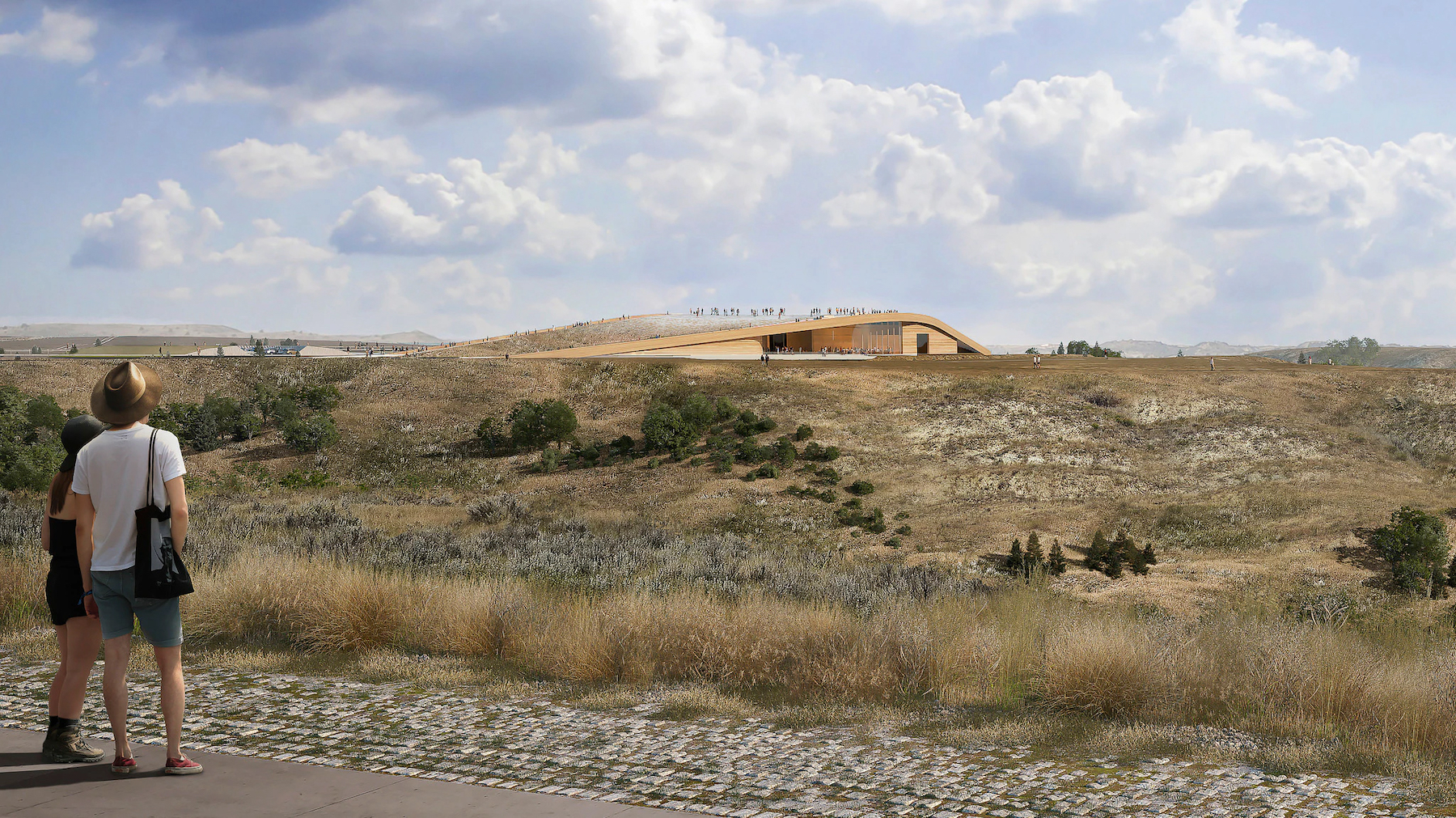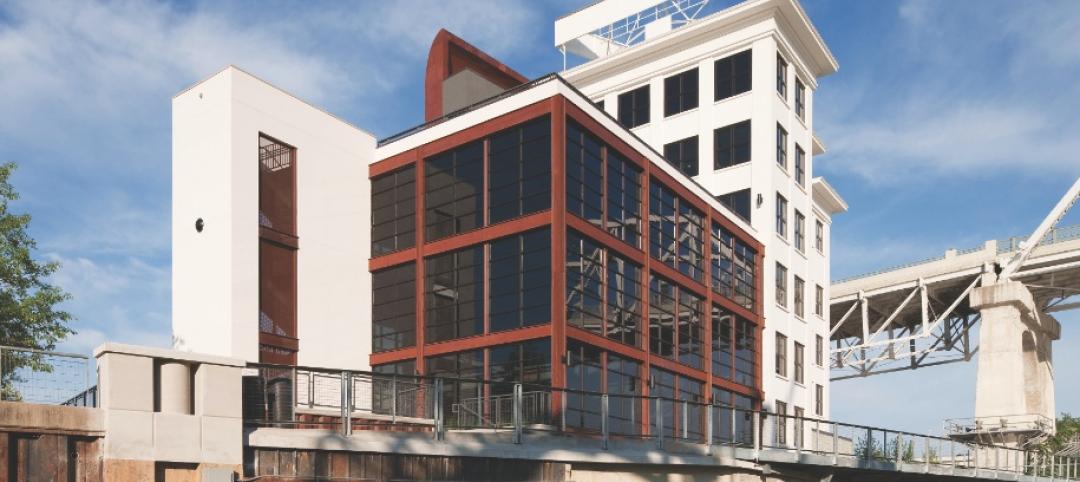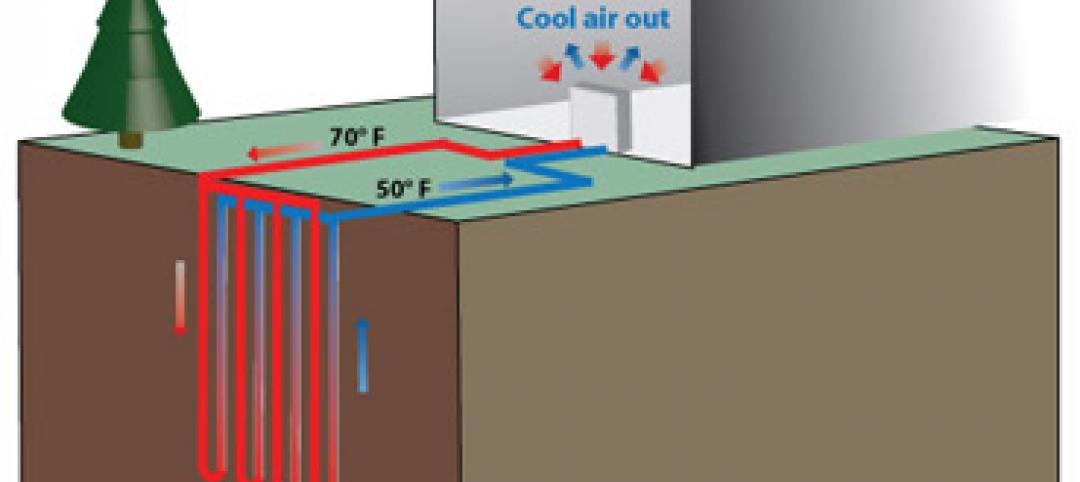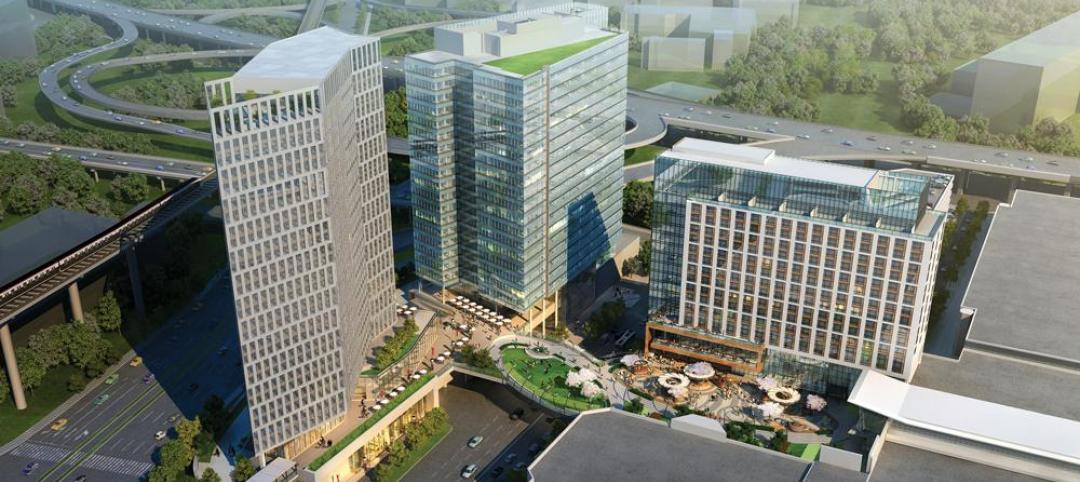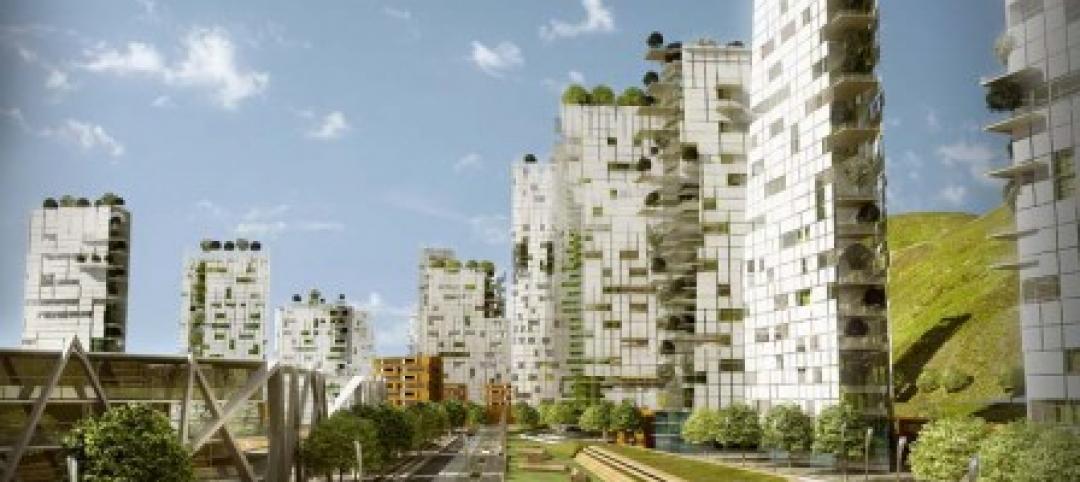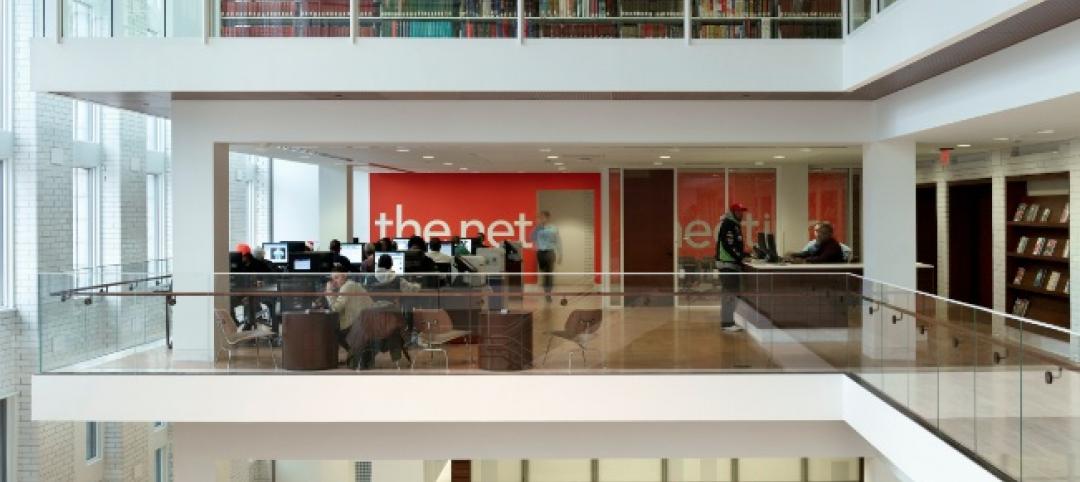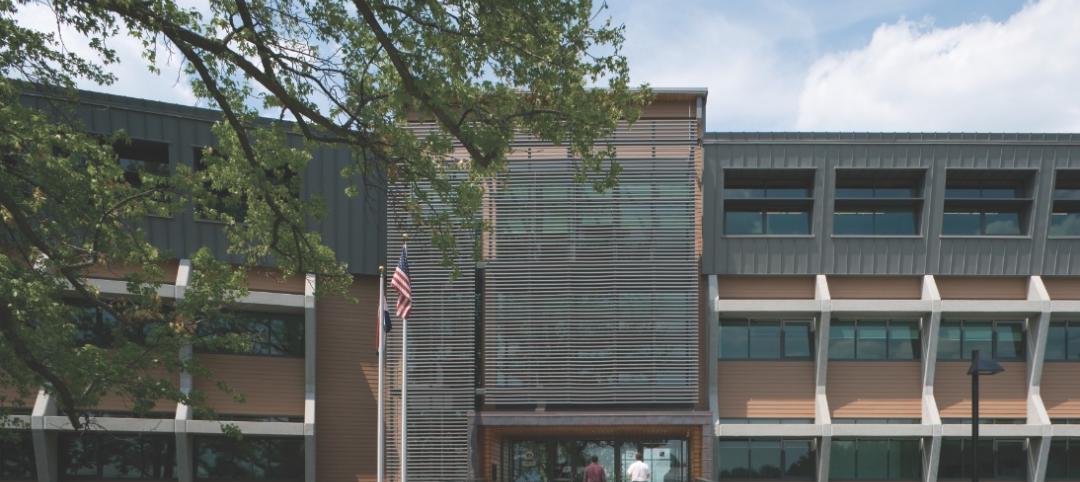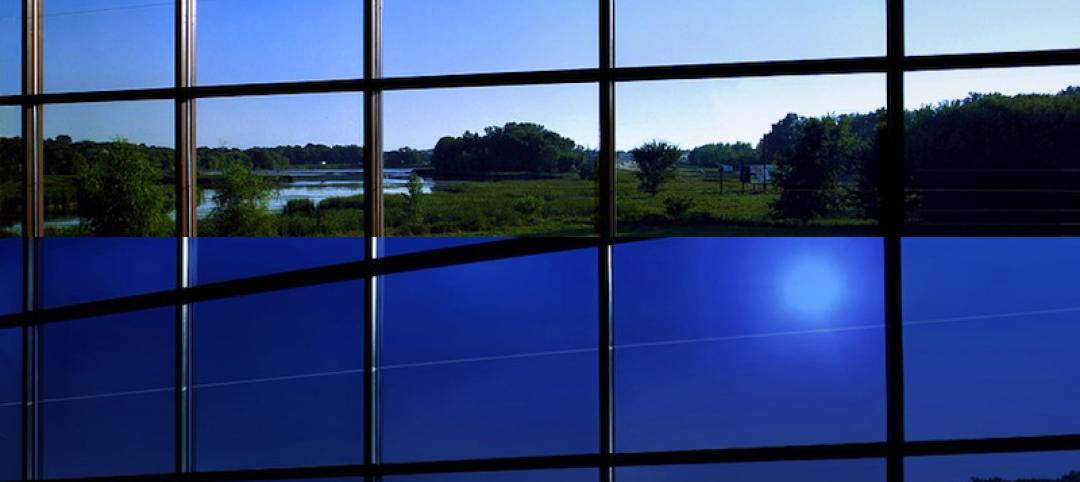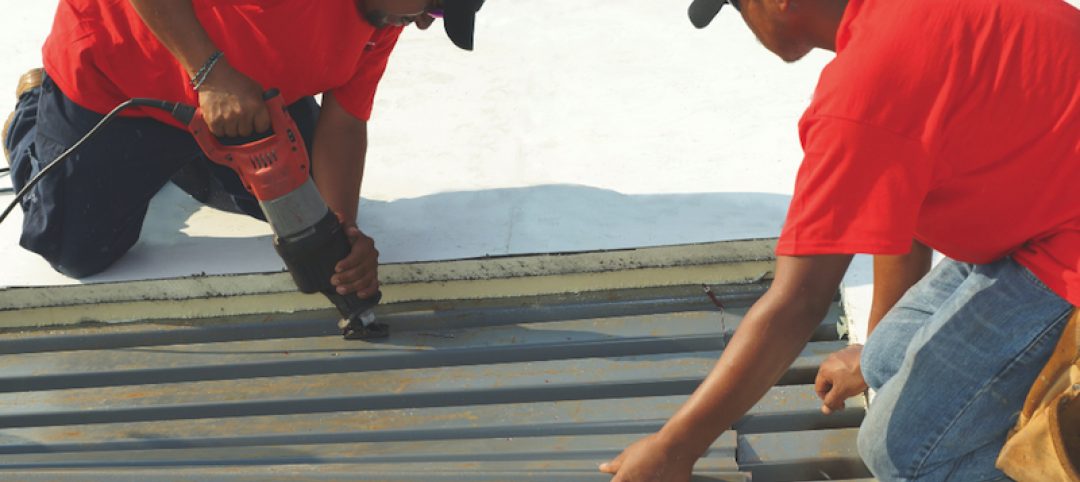On July 4, 2026, the Theodore Roosevelt Presidential Library is scheduled to open on 93 acres in Medora, a town in North Dakota with under 130 permanent residents, but which nonetheless has become synonymous with the 26th President of the United States, who lived there for several years in the 1880s.
The under-construction $333 million library, situated on a Badlands butte near the Burning Hills Amphitheater, will not be a repository for Roosevelt’s papers or archives (which are mostly housed at Harvard University). Instead, the library’s goal is to honor the President’s legacy as a conservationist. Its design is informed by Roosevelt’s interest in environmental stewardship and his reflections about the landscape.
The single-story, 93,000-sf library/museum “is a journey preserving the existing landscape of diverse habitats punctuated with small pavilions allowing for reflection and activity,” according to the project’s website. “The main building’s gently sloping roof looks to the northeast, gazing out to the [70,447-acre] National Park, historical settings in the Little Missouri River valley, and the Elkhorn Ranch far in the distance, further connecting the Library of tomorrow with its origins of the past.”
“The Library is the landscape,” Edward O’Keefe, CEO of the Theodore Roosevelt Presidential Library, told the New York Times.
Mass timber complements construction
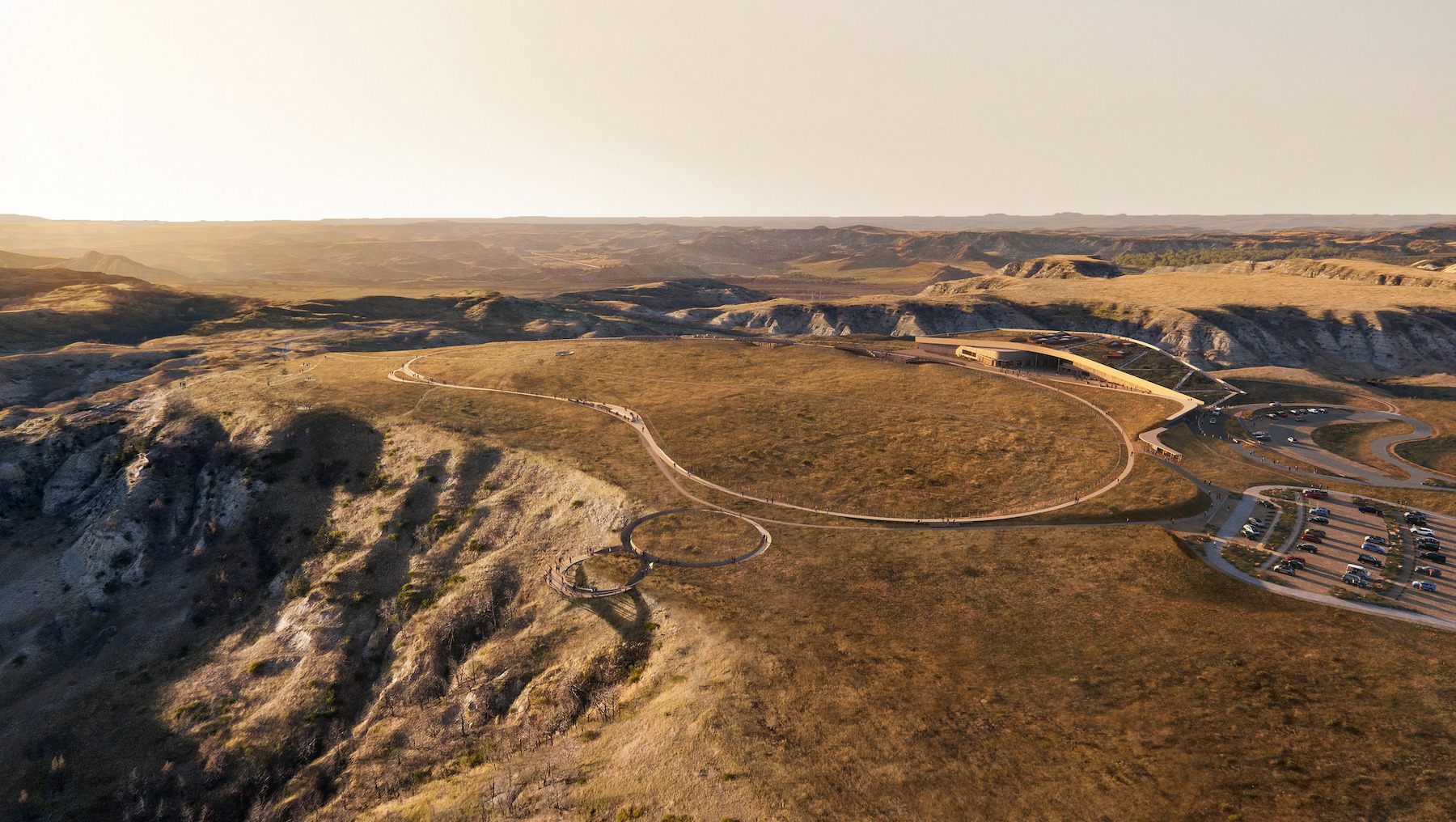
Mass timber is a significant component in the construction of the Library. The Mercer Mass Timber subsidiary of Mercer International is providing nearly 1,800 cubic meters of cross-laminated timber and glulam––harvested from sustainably managed forests––which are being used for the building’s structure that includes a green walkable roof, as well as a one-mile-long boardwalk loop in front of the Library that aligns with the roof’s curvature.
The green roof aims to restore the vegetation disrupted within the building’s footprint, and to create a habitat for native plants. The Library is sponsoring this Native Plant Project in partnership with Resource Environmental Solutions, the nation’s largest ecological restoration company; and North Dakota State University.
Within the Library there will be “narrative galleries,” as well as community spaces, a café, and an auditorium, which the Times pointed out would be large enough to host candidate debates during presidential election campaigns.
The Library “represents a transition we’re seeing in modern library and architectural design, where community spaces are being constructed with long-term sustainability in mind,” said Nick Milestone, Mercer’s Vice President of Projects and Construction, in a prepared statement.
In partnership with the project’s general contractor JE Dunn Construction, Mercer is providing mass timber design assistance, materials, and coordination and logistics. Other AEC firms involved in this project: Snøhetta (design and landscape architect), JLG Architects (AOR), Seagate (mass timber installation), Magnusson Klemencic Associates (Engineer of Record), and Command Industires (steel subcontractor).
The Library––which is four and a half hours north of Mount Rushmore and seven hours northeast of Yellowstone National Park––is targeting LEED Platinum and Living Building Challenge certifications. Its goal is to be net-zero energy, emissions, water, and waste.
Related Stories
| Nov 15, 2013
Greenbuild 2013 Report - BD+C Exclusive
The BD+C editorial team brings you this special report on the latest green building trends across nine key market sectors.
| Nov 13, 2013
Installed capacity of geothermal heat pumps to grow by 150% by 2020, says study
The worldwide installed capacity of GHP systems will reach 127.4 gigawatts-thermal over the next seven years, growth of nearly 150%, according to a recent report from Navigant Research.
| Oct 30, 2013
11 hot BIM/VDC topics for 2013
If you like to geek out on building information modeling and virtual design and construction, you should enjoy this overview of the top BIM/VDC topics.
| Oct 28, 2013
Urban growth doesn’t have to destroy nature—it can work with it
Our collective desire to live in cities has never been stronger. According to the World Health Organization, 60% of the world’s population will live in a city by 2030. As urban populations swell, what people demand from their cities is evolving.
| Oct 23, 2013
Gehry, Foster join Battersea Power Station redevelopment
Norman Foster and Frank Gehry have been selected to design a retail section within the £8 billion redevelopment of Battersea Power Station in London.
| Oct 18, 2013
Researchers discover tension-fusing properties of metal
When a group of MIT researchers recently discovered that stress can cause metal alloy to fuse rather than break apart, they assumed it must be a mistake. It wasn't. The surprising finding could lead to self-healing materials that repair early damage before it has a chance to spread.
| Oct 15, 2013
Cass Gilbert's landmark St. Louis Central Library gets a reboot
A $70 million project returns large sections of the building to their original Beaux Arts beauty, while modernizing the spaces to make them more inviting and useful for today’s patrons.
| Sep 19, 2013
What we can learn from the world’s greenest buildings
Renowned green building author, Jerry Yudelson, offers five valuable lessons for designers, contractors, and building owners, based on a study of 55 high-performance projects from around the world.
| Sep 19, 2013
6 emerging energy-management glazing technologies
Phase-change materials, electrochromic glass, and building-integrated PVs are among the breakthrough glazing technologies that are taking energy performance to a new level.
| Sep 19, 2013
Roof renovation tips: Making the choice between overlayment and tear-off
When embarking upon a roofing renovation project, one of the first decisions for the Building Team is whether to tear off and replace the existing roof or to overlay the new roof right on top of the old one. Roofing experts offer guidance on making this assessment.


